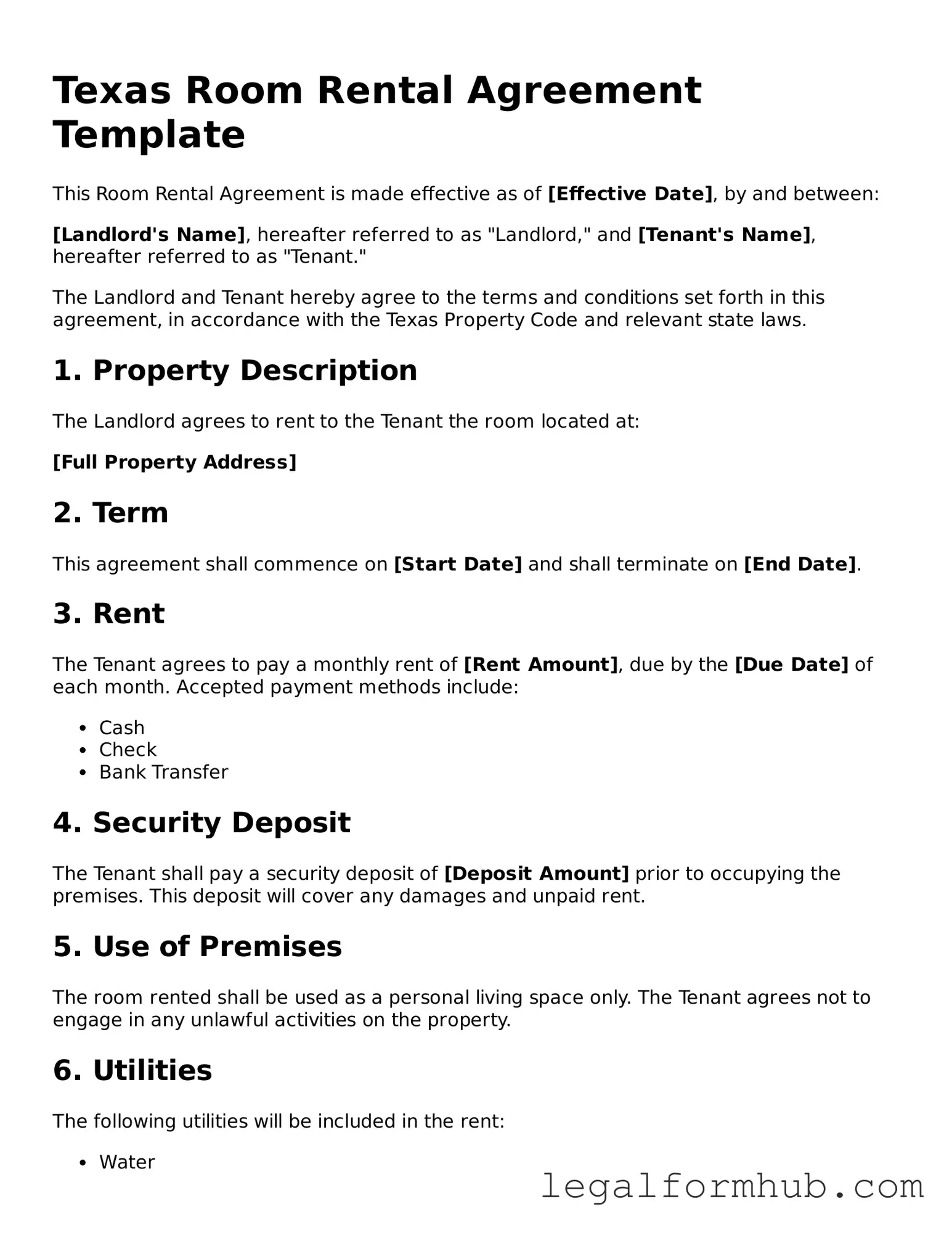The Texas Room Rental Agreement is quite similar to a Lease Agreement, which is a legally binding contract between a landlord and a tenant. Both documents outline the terms of occupancy, including rent amount, duration, and responsibilities of each party. While a lease typically covers longer terms, such as a year or more, a room rental agreement often pertains to shorter stays, making it more flexible for both landlords and tenants.
Another document that shares similarities is the Rental Application Form. This form is used by landlords to screen potential tenants. It typically requires personal information, rental history, and financial details. Like the Room Rental Agreement, the Rental Application aims to establish a clear understanding between parties, ensuring that the tenant is qualified to rent the space.
The Sublease Agreement is also comparable. This document allows a tenant to rent out their leased space to another individual. Both agreements must specify terms such as rent amount and duration. However, a sublease agreement often requires the original landlord's consent, while a room rental agreement directly involves the landlord and the new tenant.
A Roommate Agreement is another related document. This is a contract between individuals sharing a living space. It outlines each roommate's responsibilities, including rent payment, utilities, and shared chores. While the Texas Room Rental Agreement focuses on the landlord-tenant relationship, a Roommate Agreement emphasizes the dynamics between individuals sharing a home.
The Commercial Lease Agreement is similar in that it governs the rental of a property for business purposes. Like the Room Rental Agreement, it details the terms of occupancy and financial obligations. However, commercial leases often include additional clauses related to business operations, reflecting the different needs of businesses compared to residential tenants.
The Vacation Rental Agreement also bears resemblance. This document is used for short-term rentals, such as those found on platforms like Airbnb. Similar to the Texas Room Rental Agreement, it specifies terms such as rental rates, duration, and rules for the property. Both agreements aim to protect the interests of the property owner while providing clear guidelines for the guest.
The Tenant’s Rights and Responsibilities document is another relevant comparison. This document outlines the legal rights and obligations of tenants in a rental situation. While the Room Rental Agreement focuses on specific terms between landlord and tenant, the Tenant’s Rights document provides broader information about tenant protections and legal recourse available under Texas law.
To safeguard your interests as a tenant, consider using a legal Durable Power of Attorney document, which enables a trusted individual to make decisions on your behalf in times of incapacity.
The Move-In/Move-Out Checklist is also a significant document. It serves as a record of the property's condition at the beginning and end of a rental period. This checklist is crucial for both landlords and tenants, as it helps prevent disputes over security deposits. Like the Room Rental Agreement, it aims to establish clarity and mutual understanding between the parties involved.
Lastly, the Notice to Vacate is similar in that it is a formal communication regarding the end of a rental agreement. This document is used by tenants to inform landlords of their intent to leave the property. Both the Notice to Vacate and the Room Rental Agreement outline important timelines and procedures, ensuring that both parties are aware of their responsibilities as the rental period comes to a close.
